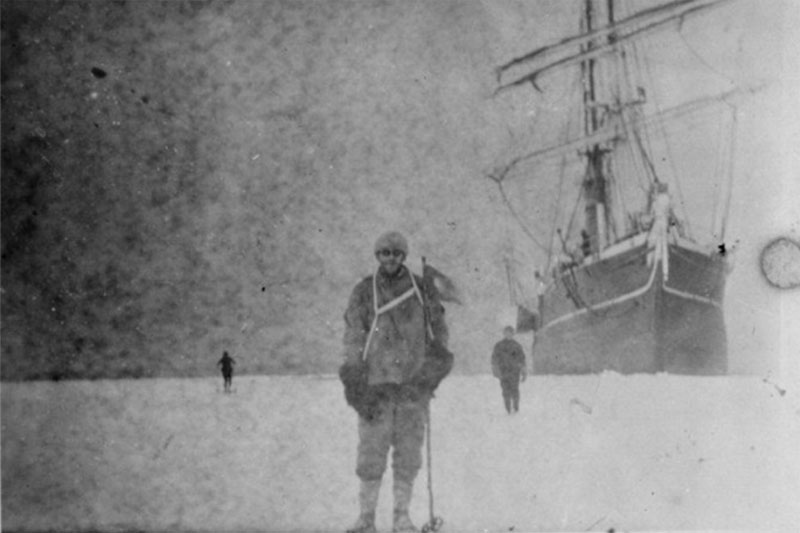nzaht.org | Press Release | Facebook
Photographic negatives left a century ago in Captain Scott’s last expedition base at Cape Evans have been discovered and conserved by New Zealand’s Antarctic Heritage Trust. The negatives were found in expedition photographer Herbert Ponting’s darkroom and have been painstakingly conserved revealing never before seen Antarctic images.
nzaht.org | Press Release | Facebook
The Trust’s conservation specialists discovered the clumped together cellulose nitrate negatives in a small box as part of the Ross Sea Heritage Restoration Project which has seen
more than 10,000 objects conserved at Scott’s Cape Evans hut. The negatives were removed from Antarctica by the Trust earlier this year. Detailed conservation treatment back in New Zealand separating the negatives has revealed twenty-two images. The photographs are from Ernest Shackleton’s 1914-1917 Ross Sea Party, which spent time living in Scott’s hut after being stranded on Ross Island when their ship blew out to sea.
nzaht.org | Press Release | Facebook
One of the most striking images (shown above) is of Ross Sea Party member Alexander Stevens, Shackleton’s Chief Scientist, standing on-board the Aurora.
nzaht.org | Press Release | Facebook
The photographs found in Captain Scott’s expedition base at Cape Evans, Antarctica required specialist conservation treatment. The Antarctic Heritage Trust (NZ) engaged Photographic Conservator Mark Strange to undertake the painstaking task of separating, cleaning (including removing mould) and consolidating the cellulose nitrate image layers. Twenty-two separate sheets were revealed and sent to New Zealand Micrographic Services for scanning using a Lanovia pre-press scanner. The digital scans were converted to digital positives.
nzaht.org | Press Release | Facebook
The photographs found in Captain Scott’s expedition base at Cape Evans, Antarctica required specialist conservation treatment. The Antarctic Heritage Trust (NZ) engaged Photographic Conservator Mark Strange to undertake the painstaking task of separating, cleaning (including removing mould) and consolidating the cellulose nitrate image layers. Twenty-two separate sheets were revealed and sent to New Zealand Micrographic Services for scanning using a Lanovia pre-press scanner. The digital scans were converted to digital positives.
nzaht.org | Press Release | Facebook
Antarctic Heritage Trust
The Antarctic Heritage Trust (NZ) is a not-for-profit organisation responsible for the conservation of five historic sites in the Ross Sea region of Antarctica including Ernest Shackleton’s, Robert Falcon Scott’s and Edmund Hillary’s expedition bases through its Ross Sea Heritage Restoration Project. Work is currently centred on conserving artefacts from Scott’s 1911 expedition base and conserving Scott’s 1902 expedition base.
If you enjoyed this post, the Sifter
highly recommends:
